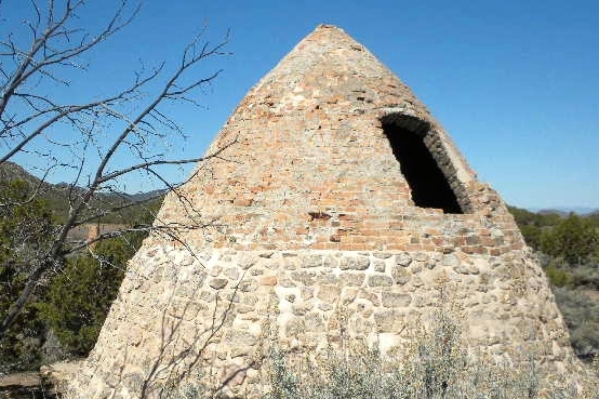Explore remnants of Utah iron mining ventures

Utah bears the scars of many mining ventures. The Mormons who colonized the region in the mid-1800s diligently explored the territory for resources.
Their objective was to be self-sufficient and not rely on trade with outsiders. It was a practical approach since they were so far from trade routes when they first moved to an unclaimed portion of the West.
The Mormons found plenty of resources in Utah, such as forests and stone for building, coal for domestic and commercial needs, useful metals like lead and copper, minerals like salt, even precious commodities like gold and silver. One essential metal that the area seemed to lack was iron, which was so heavy that not much was available from overland traders.
Then exciting reports reached Mormon officials in Salt Lake City that iron deposits had been discovered in the southwestern part of the territory. In 1851, Mormon colonists were sent south to start a new settlement called Parowan as the first step in developing an iron industry in the region.
Late the same year, a military-style group of men left Parowan to establish an “Iron Mission” that would later become Cedar City. A site was chosen about halfway between the iron deposits and the coal found in Cedar Canyon. The men built cabins for families that would soon follow. Unfortunately, the first site they chose was in a flood plain and Fort Cedar had to be moved to a better location in 1855.
Despite many setbacks, including floods and crop failures, the pioneers managed to construct an iron works, but the local coal fired in the blast furnace contained too much sulfur to yield good results. In its six years of operation, only 400 tons of iron were produced. The disappointing first effort to process iron ore ended in 1858.
Visitors to Frontier Homestead State Park in Cedar City, formerly Iron Mission State Park, can see the blast furnace built by the first Mormon settlers and the town bell, the only artifact left from the original iron works. The state park, at 635 N. Main St., is a day-use area with a visitor center, interpretive trails and picnic facilities. It traces area history with exhibits of pioneer artifacts, a collection of horse-drawn vehicles from 1850 to 1920 and a group of restored pioneer cabins. Special events at the park include demonstrations of frontier skills. A $3 entrance fee is charged.
Ask at the state park about Old Iron Town, which grew as the result of a second attempt, in 1868, at developing an iron industry in the area. The park should have a brochure with historical information and details for a self-guiding trail. The industrial ghost town located about 25 miles west of Cedar City is reached by way of state Route 56, the road into Nevada through Panaca. Turn south and travel about five miles into Dixie National Forest. As you turn off the pavement, take note of a scarred red mountain to the north of the highway. This is Iron Mountain, one of the sources of iron ore that so excited the Mormon pioneers.
Originally called Iron City, the ghost town was a company town for the Union Iron Works, which successfully processed iron ore. The company stopped using coal in the blast furnace, turning instead to charcoal made from wood cut in local forests and processed on-site in beehive-shaped ovens.
At its height, Old Iron Town had a schoolhouse, a furnace, an arastra for grinding fine sand for molds, a blacksmith shop, a general store, the charcoal kilns and cabins for its workers. It was a productive effort, but outside events caused its demise. The site was abandoned in 1876.
Visitors today will see the blast furnace chimney, ruined walls of the foundry, the arastra, one of the charcoal kilns and a cabin reached by one of the two short interpretive trails. Some parts are fenced off for protection. The site was listed on the National Register of Historic Places in 1971. Iron mining continued for decades with the ore shipped by train to Provo for processing. Iron Mountain remains one of the richest iron deposits in the country.
— Margo Bartlett Pesek’s Trip of the Week column appears on Sundays.












